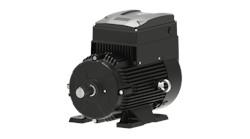In the March 2015 issue of Water Technology, Dr. Joe Cotruvo breaks down activated carbon (AC) and how it is used in water treatment in his Professor POU/POE column.
Cotruvo writes that when thermally treated, AC facilitates the binding of chemicals when water or other liquids or gasses pass through the medium.
How it’s made
AC exists in many different types for various water treatment applications. If used in drinking water, the carbon must meet applicable ANSI/NSF standards. It is commercially available for water treatment in extruded block, granular or powdered forms.
A highly porous carbon structure is formed when carbonaceous materials (bituminous cola, wood, coconut shells) are heated in the absence of air to form a carbonized char. Then the surface is oxidized, or activate, to 800 to 1,200oC in the presence of steam, carbon dioxide or air.
ACs with different surface properties and effects to various contaminants can be produced with chemical activation "by impregnating the raw material with acids like phosphoric acid, bases like sodium hydroxide or salts like zinc chloride and then heating to lower temperatures."
Applications
Cotruvo explains that different varieties of ACs are suited for various substances. Iodine number, molasses number and dechlorination half-length are examined to evaluate the proper applications.
- Granular activated carbon (GAC) can remove chloramines from drinking water, but it must be taken into account that chloramine reduction is much slower than free chlorine reduction. GAC are used in fixed beds and post contactors and can be reactivated when needed.
- GAC dechlorinates water, accumulates organic material and produces a chemical-reducing environment, a combination that can be conducive to microbial regrowth. Because of this, GAC or carbon block systems are often impregnated with silver salts to depress the heterotrophic plate count, which measures the bacterial regrowth.
- Powdered activated carbon (PAC) comes in fine powders of granules for various size ranges. PAC is used intermittently to eliminate trace synthetic chemicals and taste and odor causes such as the chemical geosmin, as well as during chemical spills or algal blooms. Filtration can remove PAC after a one-time use.
- Extruded activated carbon (EAC) are effective in dechlorination and removing chemicals. They are produced by mixing PAC with a brinder, then extruding it into a cylindrical block.
The versatility of AC makes it an effective option for gas phase, drinking water and wastewater treatment, Cotruvo writes. It can also improve beverage and other fluids qualities.
You can find the entire article here.


